Abstract
Isolated normal human peripheral lymphocytes were analyzed for their ability to bind IgE as shown by rosette formation with aldehydefixed ox red cells coated with an IgE myeloma protein (Eo'-IgE) as indicator cells. An average of 4.3% of the cells in the lymphocyte preparations of 12 donors formed Eo'-IgE rosettes. The lymphocyte preparations contained an average of 0.36% basophils which also formed Eo'-IgE' rosettes, suggestiing that about 4% of the lymphocytes bound IgE. The rosette formation was inhibited by IgE myeloma protiens or IgE Fc fragments but not by IgE Fab fragments or Ig of the other classes. On the average, the lymphocytes of the 12 donors contained 70.5% cells forming spontaneous rosettes with sheep erythrocytes (E), 10.6% cells having surface immunoglobulin (SIg), and 15.5% bunding IgG as shown by rosette formation with IgG-coated ox red cells (EoA). Fractionation of the lymphocytes into populations rich in spontaneously E-rosetting cells and cells with SIg indicated that the majority of the lymphocytes forming Eo'-IgE rosettes belonged to the SIg-positive lymphocytes. Analyses of lymphocyte populations lacking cells forming EoA rosettes and of rosetting with mixed indicator cells both demonstrated that over 90% of the lymphocytes forming Eo'-IgE rosettes did not form EoA rosettes and apparently had no Fc receptors for IgG. Pretreatment of the lymphocytes with trypsin in amounts that did not alter the number of EoA-rosetting cells abolished the Eo'-IgE rosette formation. These data indicate that a subpopulation of normal human peripheral lymphocytes, probably belonging to the B-cell type, binds IgE presumably via trypsin-sensitive receptors specific for the Fc fragment of IgE. The surface markers of these lymphocytes resemble those of cultured human lymphoblastoid cells that have recently been shown to bind IgE.
Full text
PDF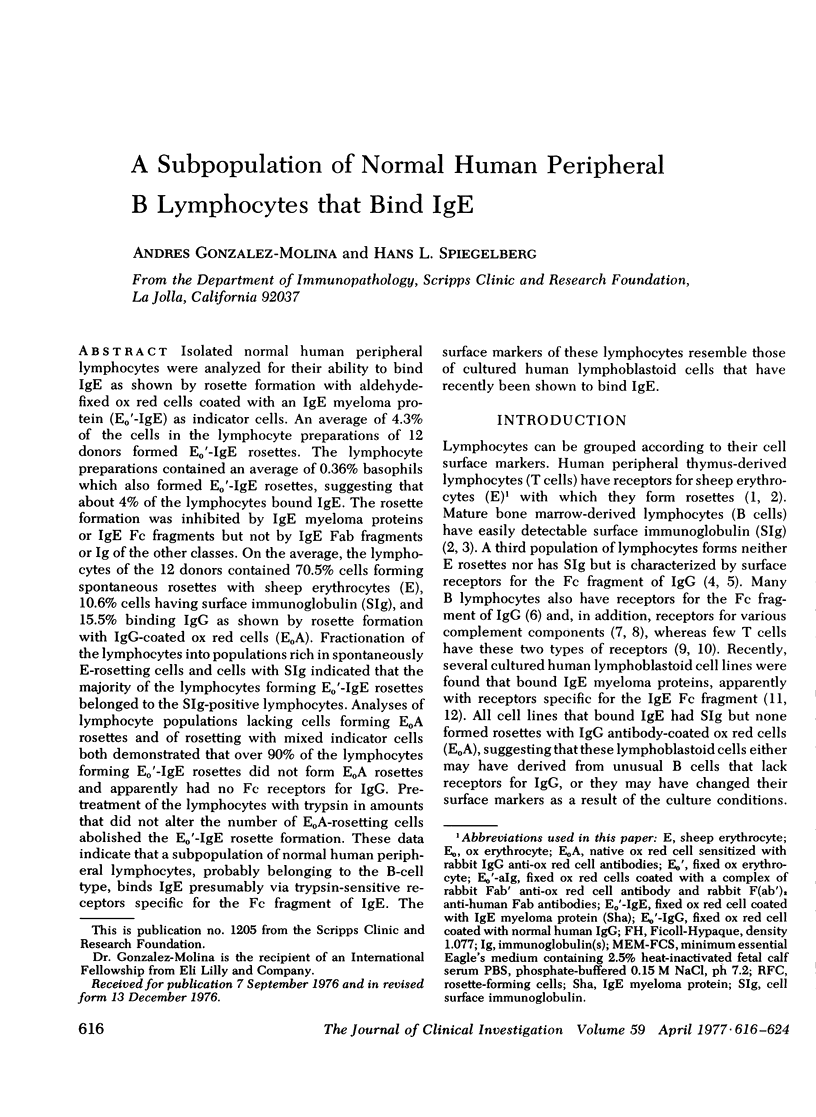
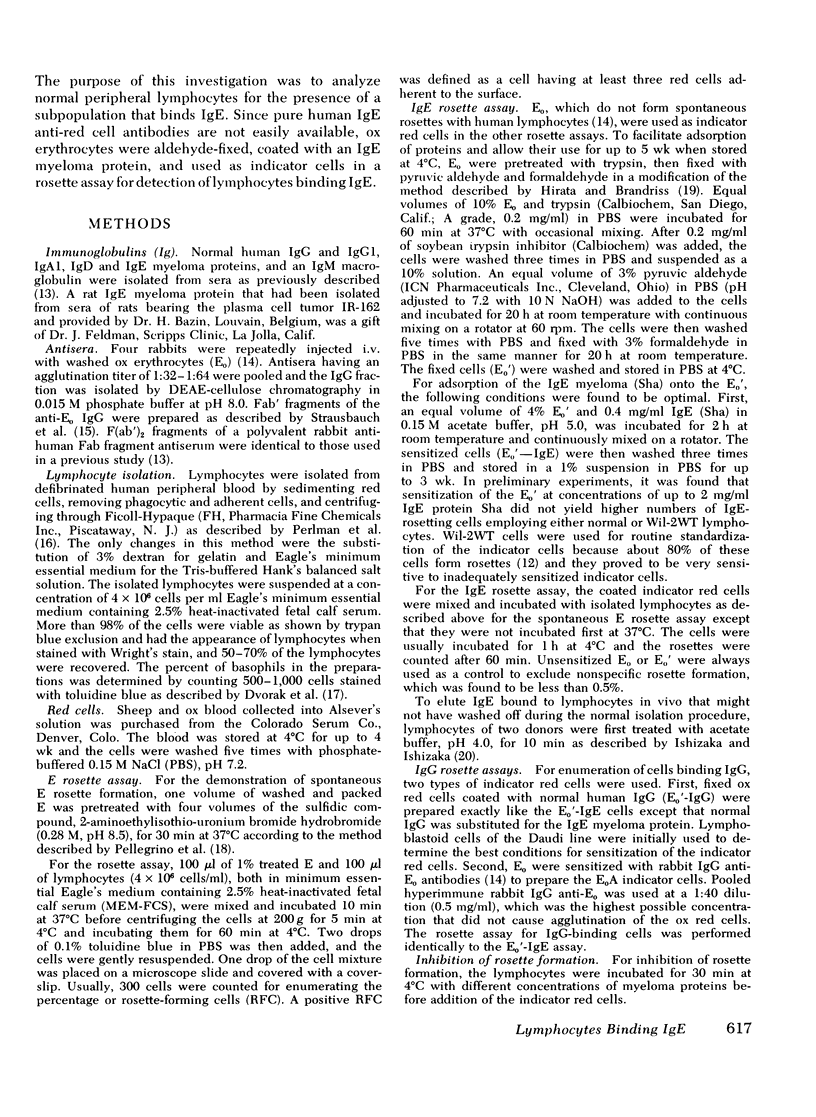
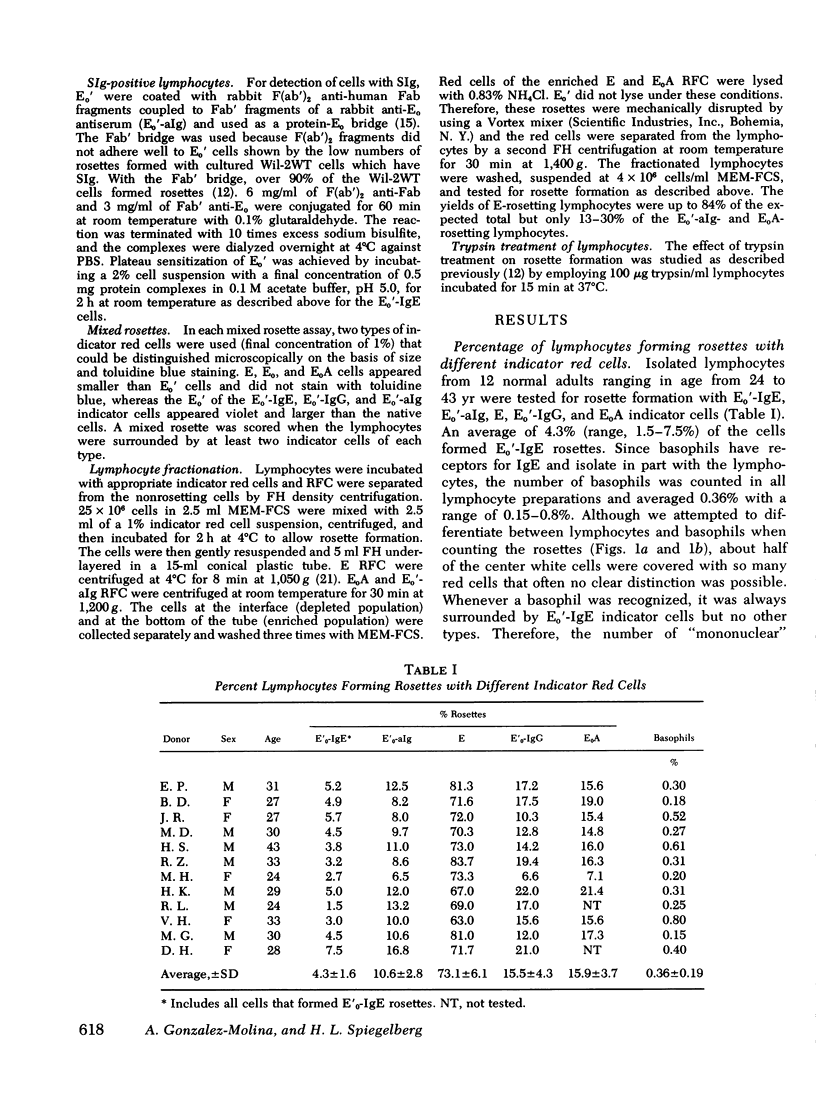
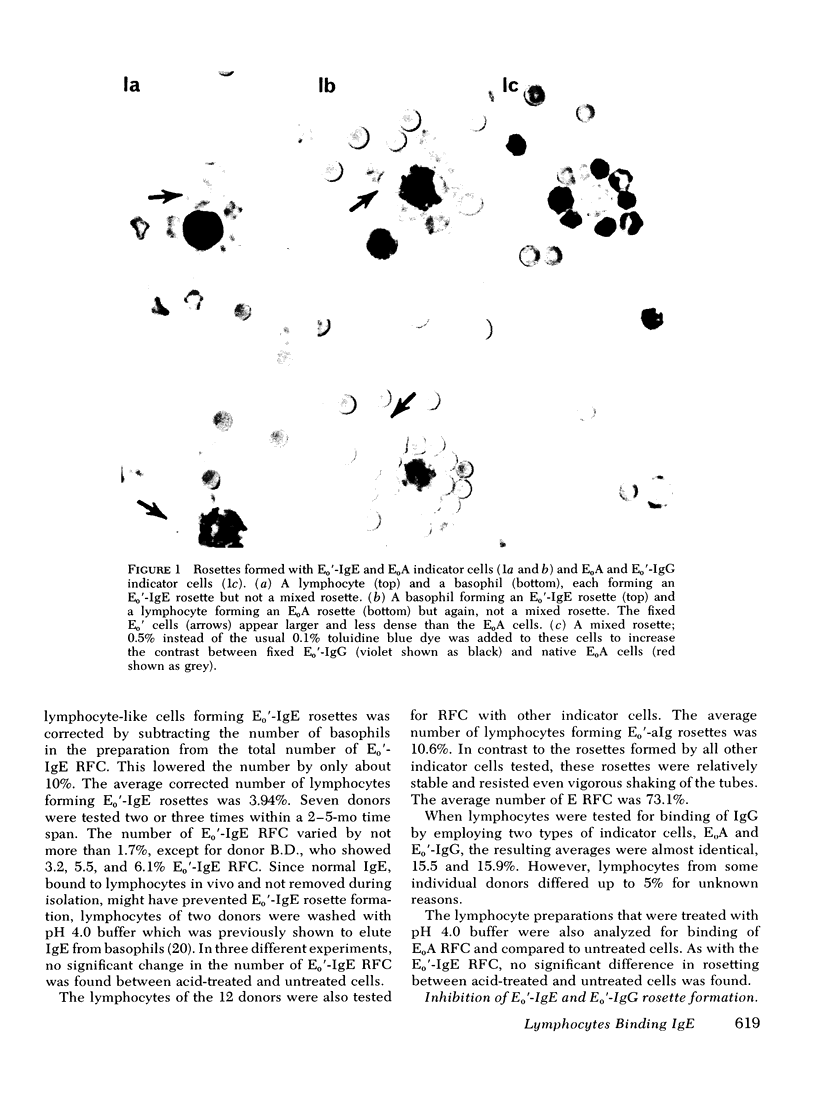
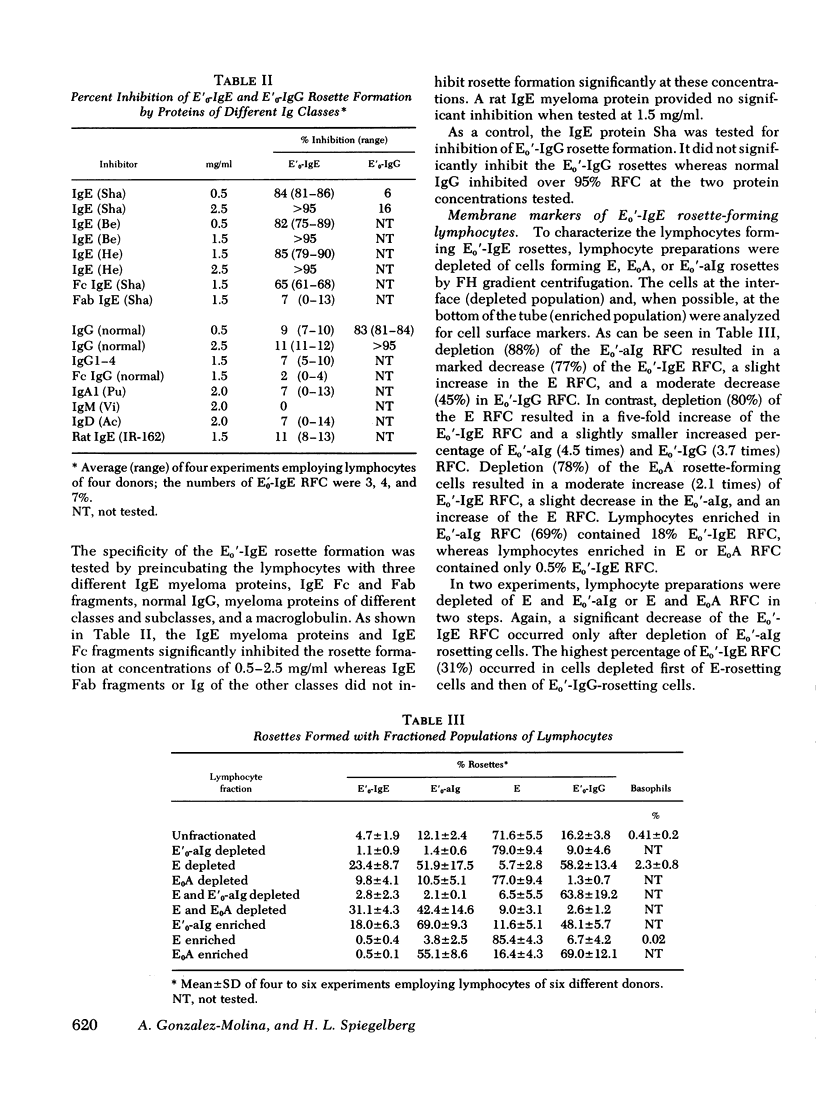
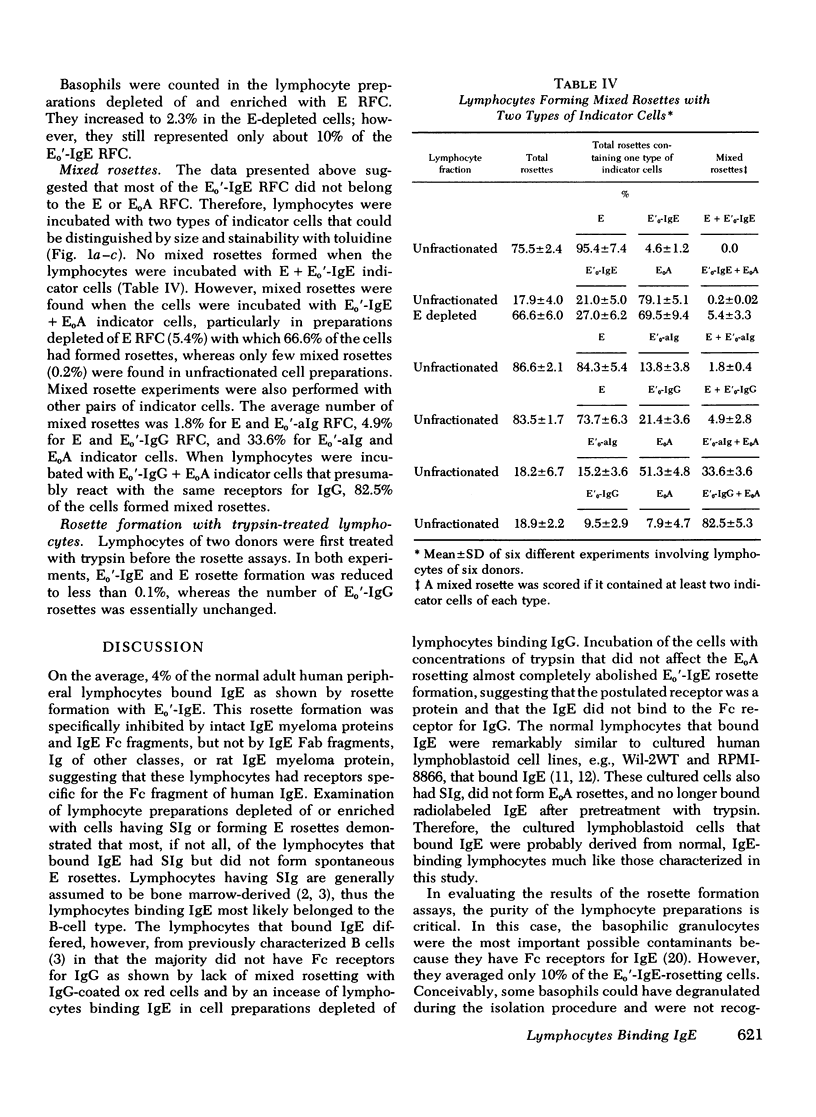
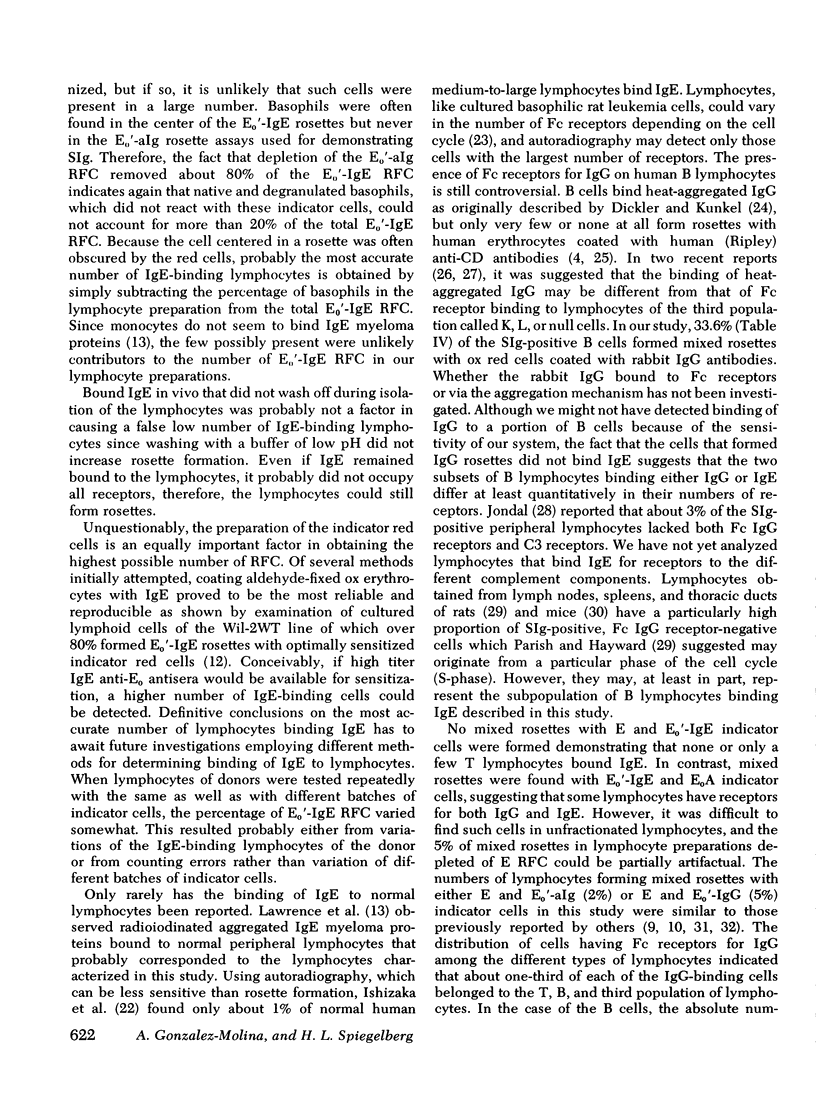
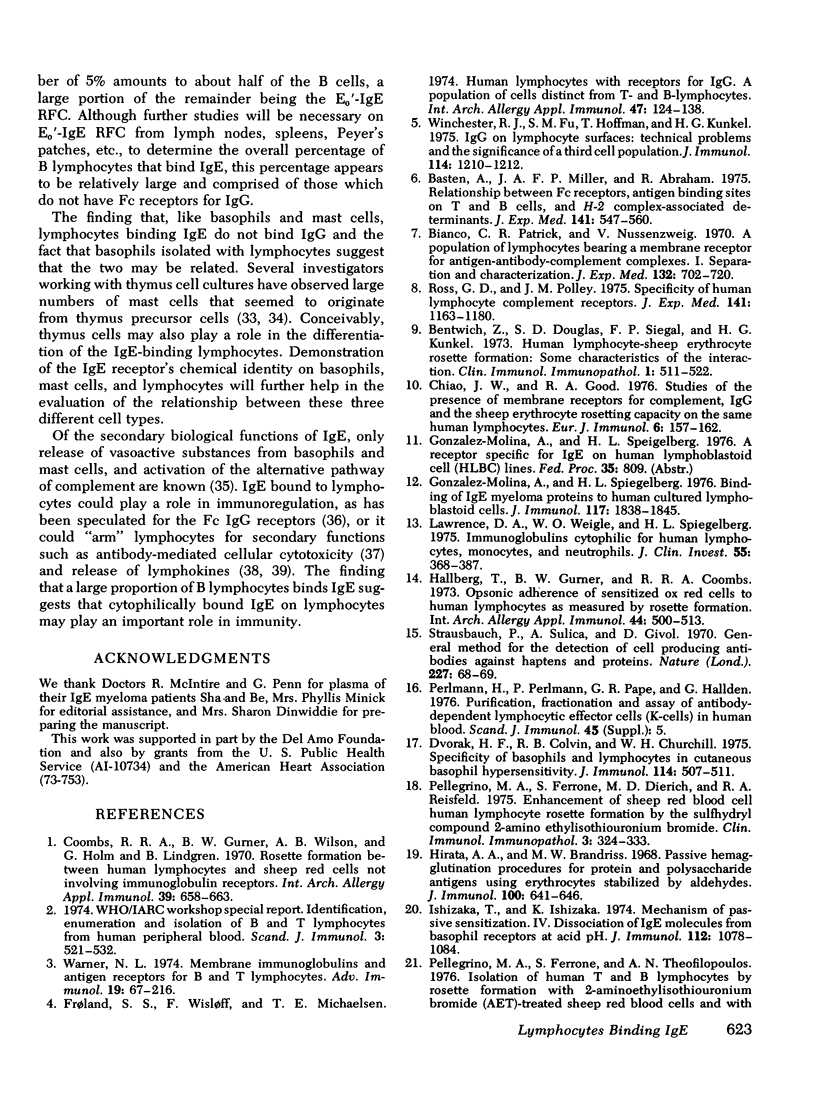
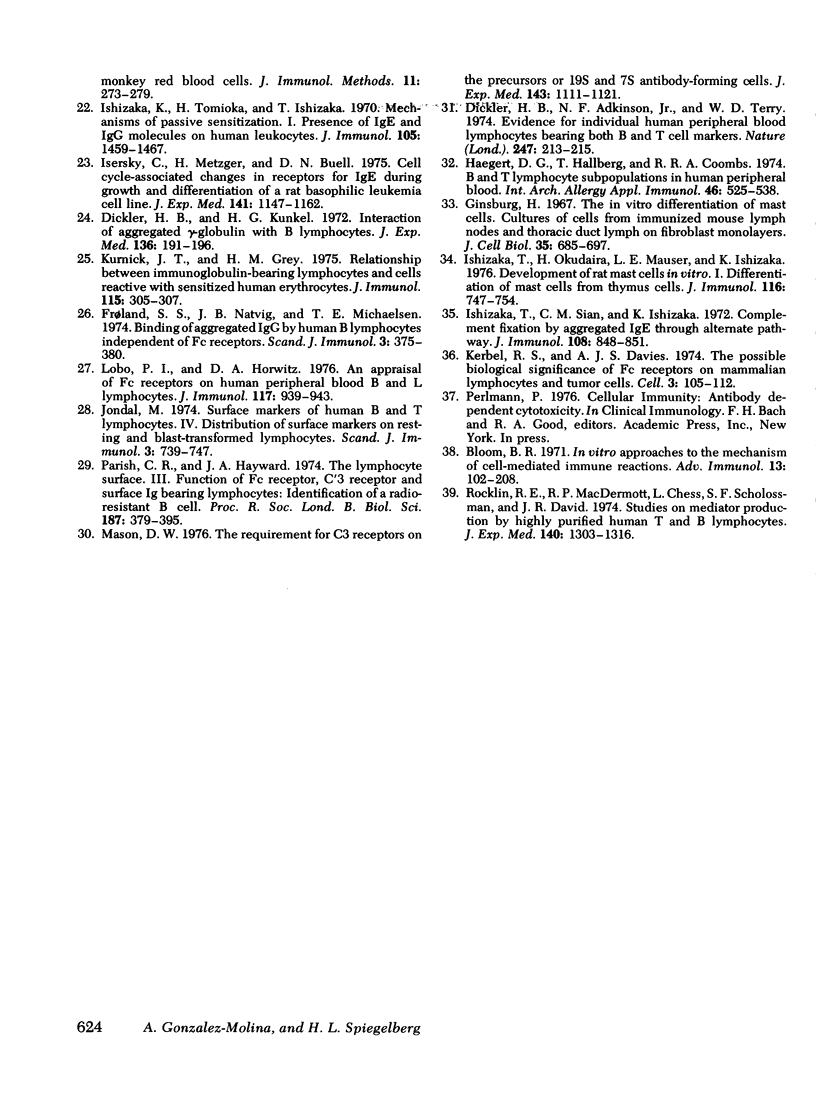
Images in this article
Selected References
These references are in PubMed. This may not be the complete list of references from this article.
- Basten A., Miller J. F., Abraham R. Relationship between Fc receptors, antigen-binding sites on T and B cells, and H-2 complex-associated determinants. J Exp Med. 1975 Mar 1;141(3):547–560. doi: 10.1084/jem.141.3.547. [DOI] [PMC free article] [PubMed] [Google Scholar]
- Bentwich Z., Douglas S. D., Siegal F. P., Kunkel H. G. Human lymphocyte-sheep erythrocyte rosette formation: some characteristics of the interaction. Clin Immunol Immunopathol. 1973 Jul;1(4):511–522. doi: 10.1016/0090-1229(73)90007-x. [DOI] [PubMed] [Google Scholar]
- Bianco C., Patrick R., Nussenzweig V. A population of lymphocytes bearing a membrane receptor for antigen-antibody-complement complexes. I. Separation and characterization. J Exp Med. 1970 Oct 1;132(4):702–720. doi: 10.1084/jem.132.4.702. [DOI] [PMC free article] [PubMed] [Google Scholar]
- Chiao J. W., Good R. A. Studies of the presence of membrane receptors for complement, IgG and the sheep erythrocyte rosetting capacity on the same human lymphocytes. Eur J Immunol. 1976 Mar;6(3):157–162. doi: 10.1002/eji.1830060304. [DOI] [PubMed] [Google Scholar]
- Coombs R. R., Gurner B. W., Wilson A. B., Holm G., Lindgren B. Rosette-formation between human lymphocytes and sheep red cells not involving immunoglobulin receptors. Int Arch Allergy Appl Immunol. 1970;39(5-6):658–663. doi: 10.1159/000230390. [DOI] [PubMed] [Google Scholar]
- Dvorak H. F., Colvin R. B., Churchill W. H. Specificity of basophils and lymphocytes in cutaneous basophil hypersensitivity. J Immunol. 1975 Jan;114(1 Pt 2):507–511. [PubMed] [Google Scholar]
- Froland S. S., Natvig J. B., Michaelsen T. E. Binding of aggregated IgG BY HUMAN B lymphocytes independent of Fc receptors. Scand J Immunol. 1974;3(3):375–380. doi: 10.1111/j.1365-3083.1974.tb01268.x. [DOI] [PubMed] [Google Scholar]
- Froland S. S., Wisloff F., Michaelsen T. E. Human lymphocytes with receptors for IgG. A population of cells distinct from T- and B-lymphocytes. Int Arch Allergy Appl Immunol. 1974;47(1):124–138. doi: 10.1159/000231207. [DOI] [PubMed] [Google Scholar]
- Gonzalez-Molina A., Spiegelberg H. L. Binding of IgE myeloma proteins to human cultured lymphoblastoid cells. J Immunol. 1976 Nov;117(5 PT2):1838–1845. [PubMed] [Google Scholar]
- Haegert D. G., Hallberg T., Coombs R. R. B and T lymphocyte subpopulations in human peripheral blood. Int Arch Allergy Appl Immunol. 1974;46(4):525–538. doi: 10.1159/000231155. [DOI] [PubMed] [Google Scholar]
- Hallberg T., Gurner B. W., Coombs R. R. Opsonic adherence of sensitized ox red cells to human lymphocytes as measured by rosette formation. Int Arch Allergy Appl Immunol. 1973;44(4):500–513. doi: 10.1159/000230956. [DOI] [PubMed] [Google Scholar]
- Hirata A. A., Brandriss M. W. Passive hemagglutination procedures for protein and polysaccharide antigens using erythrocytes stabilized by aldehydes. J Immunol. 1968 Mar;100(3):641–646. [PubMed] [Google Scholar]
- Ishizaka K., Tomioka H., Ishizaka T. Mechanisms of passive sensitization. I. Presence of IgE and IgG molecules on human leukocytes. J Immunol. 1970 Dec;105(6):1459–1467. [PubMed] [Google Scholar]
- Ishizaka T., Ishizaka K. Mechanisms of passive sensitization. IV. Dissociation of IgE molecules from basophil receptors at acid pH. J Immunol. 1974 Mar;112(3):1078–1084. [PubMed] [Google Scholar]
- Ishizaka T., Okudaira H., Mauser L. E., Ishizaka K. Development of rat mast cells in vitro. I. Differentiation of mast cells from thymus cells. J Immunol. 1976 Mar;116(3):747–754. [PubMed] [Google Scholar]
- Jondal M. Surface markers on human B and T lymphocytes. IV. Distribution of surface markers on resting and blast-transformed lymphocytes. Scand J Immunol. 1974;3(6):739–747. doi: 10.1111/j.1365-3083.1974.tb01309.x. [DOI] [PubMed] [Google Scholar]
- Lawrence D. A., Weigle W. O., Spiegelberg H. L. Immunoglobulins cytophilic for human lymphocytes, monocytes, and neutrophils. J Clin Invest. 1975 Feb;55(2):368–376. doi: 10.1172/JCI107940. [DOI] [PMC free article] [PubMed] [Google Scholar]
- Parish C. R., Hayward J. A. The lymphocyte surface. III. Function of Fc receptor, C'3 receptor and surface Ig bearing lymphocytes: identification of a radioresistant B cell. Proc R Soc Lond B Biol Sci. 1974 Nov 19;187(1089):379–395. doi: 10.1098/rspb.1974.0083. [DOI] [PubMed] [Google Scholar]
- Pellegrino M. A., Ferrone S., Dierich M. P., Reisfeld R. A. Enhancement of sheep red blood cell human lymphocyte rosette formation by the sulfhydryl compound 2-amino ethylisothiouronium bromide. Clin Immunol Immunopathol. 1975 Jan;3(3):324–333. doi: 10.1016/0090-1229(75)90019-7. [DOI] [PubMed] [Google Scholar]
- Ross G. D., Polley M. J. Specificity of human lymphocyte complement receptors. J Exp Med. 1975 May 1;141(5):1163–1180. doi: 10.1084/jem.141.5.1163. [DOI] [PMC free article] [PubMed] [Google Scholar]
- Strausbauch P., Sulica A., Givol D. General method for the detection of cells producing antibodies against haptens and proteins. Nature. 1970 Jul 4;227(5253):68–69. doi: 10.1038/227068a0. [DOI] [PubMed] [Google Scholar]
- Warner N. L. Membrane immunoglobulins and antigen receptors on B and T lymphocytes. Adv Immunol. 1974;19(0):67–216. doi: 10.1016/s0065-2776(08)60252-7. [DOI] [PubMed] [Google Scholar]
- Winchester R. J., Fu S. M., Hoffman T., Kunkel H. G. IgG on lymphocyte surfaces; technical problems and the significance of a third cell population. J Immunol. 1975 Apr;114(4):1210–1212. [PubMed] [Google Scholar]



